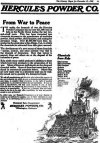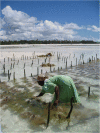Saved by seaweeds: phyconomic contributions in times of crises
- PMID: 33191980
- PMCID: PMC7647873
- DOI: 10.1007/s10811-020-02256-4
Saved by seaweeds: phyconomic contributions in times of crises
Abstract
Seaweeds (macroalgae) are, together with microalgae, main contributors to the Earth's production of organic matter and atmospheric oxygen as well as fixation of carbon dioxide. In addition, they contain a bounty of fibres and minerals, as well as macro- and micronutrients that can serve both technical and medicinal purposes, as well as be a healthy and nutritious food for humans and animals. It is therefore natural that seaweeds and humans have had a myriad of interwoven relationships both on evolutionary timescales as well as in recent millennia and centuries all the way into the Anthropocene. It is no wonder that seaweeds have also entered and served as a saviour for humankind around the globe in many periods of severe needs and crises. Indeed, they have sometimes been the last resort, be it during times of famine, warfare, outbreak of diseases, nuclear accidents, or as components of securing the fabric of social stability. The present topical review presents testimony from the history of human interaction with seaweeds to the way humankind has, over and over again, been 'saved by seaweeds'. It remains a historical fact that in extreme conditions, such as shortage and wars, humans have turned to seaweeds in times of 'needs must' and created new opportunities for their uses in order to mitigate disasters. Lessons to be learned from this history can be used as reminders and inspiration, and as a guide as how to turn to seaweeds in current and inevitable, future times of crises, not least for the present needs of how to deal with changing climates and the pressing challenges of sustainable and healthy eating.
Keywords: Crisis; Famine; Human diseases; Nuclear accidents; Seaweeds; Unemployment; War.
© Springer Nature B.V. 2020.
Conflict of interest statement
Conflict of interestThe authors declare that they have no conflict of interest.
Figures












References
-
- Allen DE, Hatfield G. Medicinal plants in folk tradition—an ethnobotany of Britain and Ireland. Crit Rev Food Sci Nutr. 2004;48:905–912.
-
- Ardiansyah MF, Alamsyah MS, Aulia F, Awinda K, Sanjaya L (2019) Seruput (seaweed straw) as a solution to reduce plastics waste for realize SDG’s in Indonesia. Proc 7th Asian Acad Soc Int Conf 2019, pp 121-124
-
- Aslan LOM, Supendy R, Taridala SAA, Hafid H, Sifatu WO, Sailan Z, Niampe L. Income of seaweed farming households: a case study from Lemo of Indonesia. Earth Environ Sci. 2018;175:012221.
-
- Attjioui M, Ryan S, Ristic A, Higgins T, Goni O, Gibney E, Tierney J, O'Connell S (2020) Kinetics and mechanism of α-glucosidase inhibition by edible brown algae in the management of type 2 diabetes. Proc Nutr Soc 79
LinkOut - more resources
Full Text Sources
